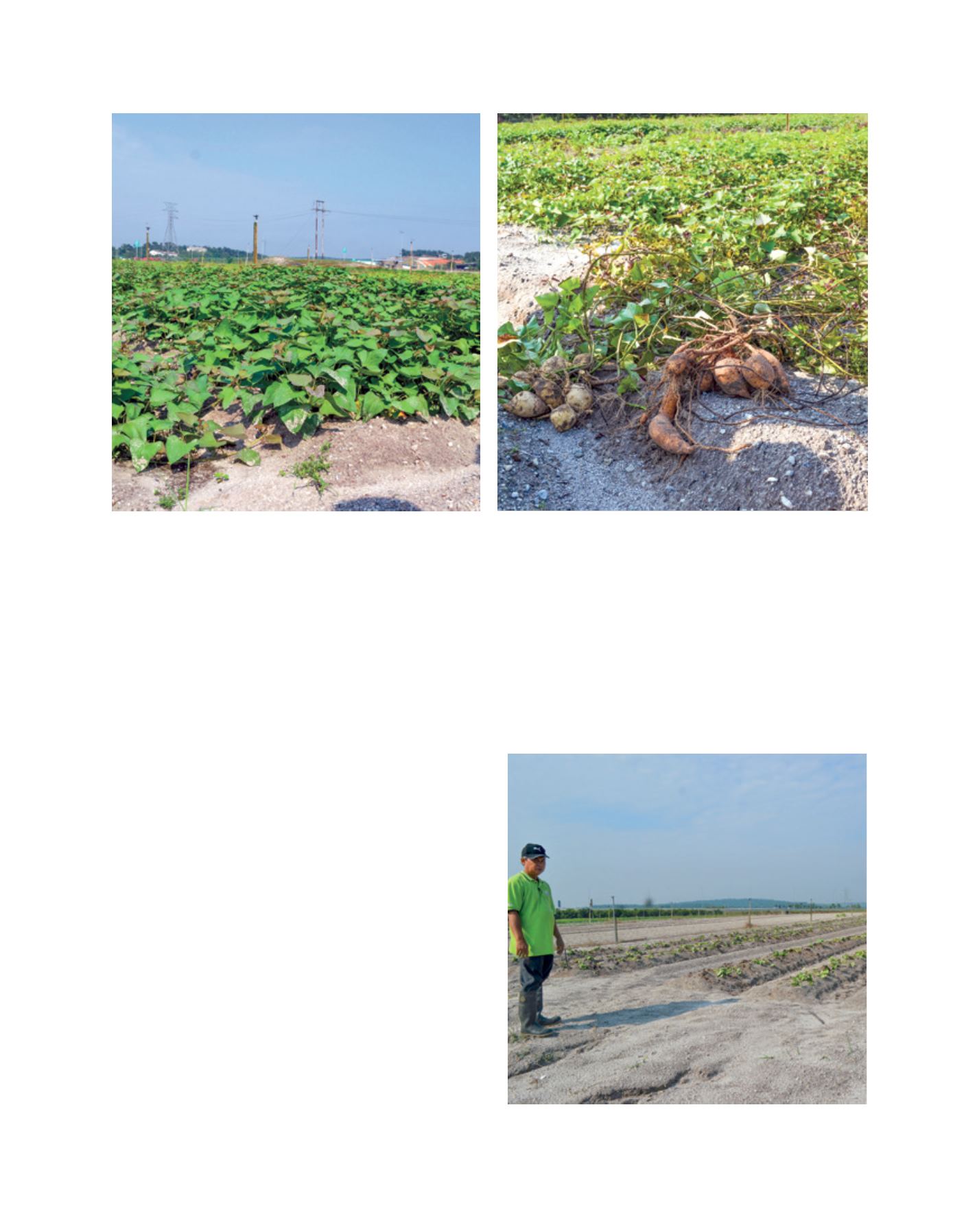

and then incorporated into the soil or applied in furrows and
mixed with the sand in the furrows. However, furrow appli-
cation of POME or poultry manure was superior to broadcast
application for a number of vegetable crops in sand tailings
such as French bean, okra, cucumber and tomato.
In both methods, it is important that the organic source
is thoroughly mixed into the soil and then left for about
three to five days before sowing or transplanting, especially
if animal manure is used. This is to ensure that the seeds or
aerobic fermentation. Solid particles of the effluent settle
to the bottom of the pond and as the water evaporates the
POME is produced. POME is rich in nutrients and has a
low carbon-nitrogen ratio indicating that the material has
undergone extensive degradation during the fermentation
process. The nutrients present in POME are readily avail-
able to the growing plants. Studies have shown that POME
is a good nutrient source for vegetables and sweetcorn in
sand tailings.
Animal manures have also been reported to improve
yields and soil properties of sand tailings. Poultry, sheep,
goat and cattle manure are good sources of slow-release
nutrients for crops on sand tailings such as chilli.
In addition to using agrobiomass directly, plant and
animal materials can be composted and used as nutrient
sources. The nutrient content of compost can vary widely
depending on the nutrient content of the source materials
as well as the proportion of the different materials used.
Legume species, with their ability to fix atmospheric
nitrogen, can be used as a soil ameliorant on sandy soil.
These legumes can be ploughed in at flowering, as a means
to maintain or improve soil organic matter and fertility.
Legumes such as
Calopogonium mucunoides
,
Centrosema
pubescens
,
Indigofera tinctoria
,
Mucuna cochinchinensis
,
Vigna radiata
,
Glycine max
,
Arachis pintoi
and
Pueraria
javanica
have been found to establish well on sandy soils.
The legume species must be inoculated with appropri-
ate inoculants and mixed with a little phosphorus before
sowing to get effective nodulation and nitrogen fixation to
occur. Incorporation of the green manure must be done
three weeks before seed sowing.
For the rehabilitation of sand tailings, the organic sources
of biomass can either be broadcast on the surface of the plot
Sweet potatoes planted on sand tailings to produce a crop of VitAto (red) and gendut (white) varieties
Images: MARDI
Newly planted sweet potato on sand-tailing for the production of
cuttings with a sprinkler watering system
Image: MARDI
[
] 169
L
iving
L
and
















